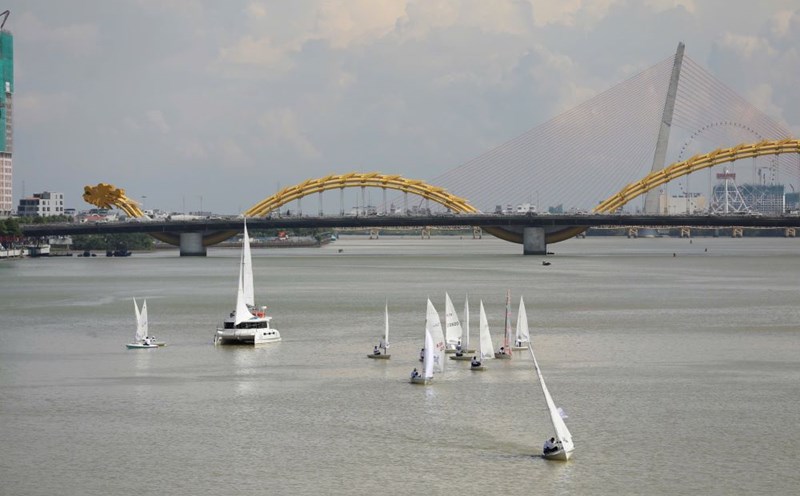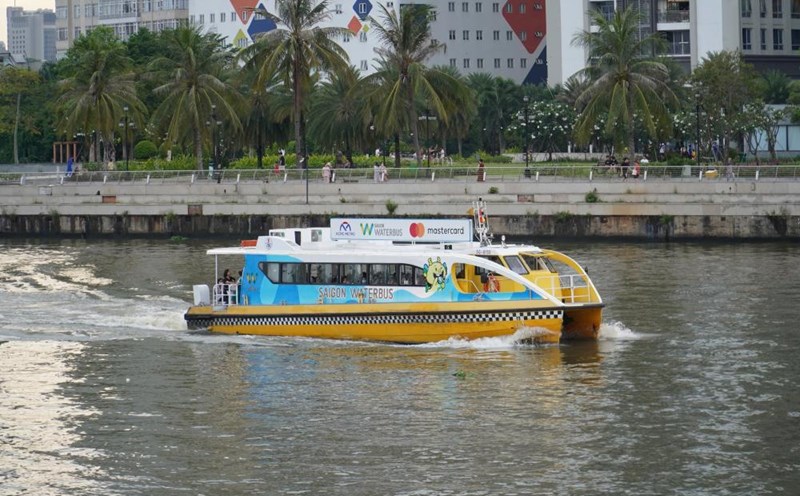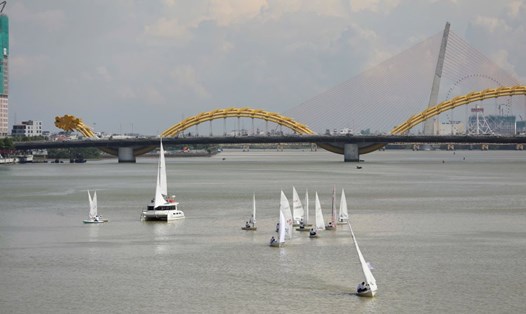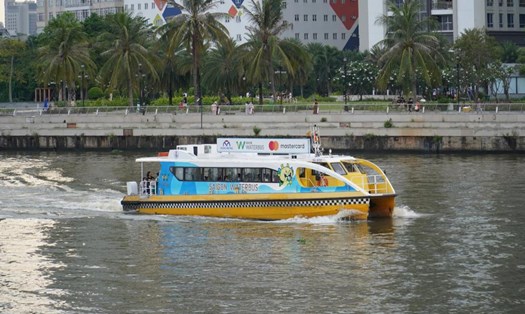The flow of the Quao River has a strange nature of reviving the soil, especially the precious clay used to make pottery that is over 1,000 years old.
Walking around the car pulled by two cows in a position to roam the fields of Hamu Nulank on a morning in late August, I kept asking myself the following questions: Why does the Quao River have such strong and mysterious ability to revive the land? If there were no Quao River, would the pottery industry in Bau Truc have existed for more than 1,000 years, and to become the oldest craft village in Southeast Asia?
In fact, the rivers are all very sacred and worshiped, because if they do not create a fertile plain, it will also be a vast and great source of life for all creatures. The Quao River is not as great as the Red River, Da River or the Mekong River system, but it still deserves to be a sacred river.
Hamu Nulank fields are located right next to the Quao River. At this time, the rice is golden ripe, lying around in the wind, just waiting for the harvesters to pick. The sky was blue, the brilliant yellow sun was filled with heat, just like the typical climate described: "Wind like Phung, sunny like roaring" of Phan Rang - Thap Cham.
Rising on the waves of rice with thousands of eyes, there are giant, white wind power fans slowly spinning. This sun and wind are favorable conditions for setting up wind power farms, serving the Net Zero goal that Vietnam is actively participating in.
Seeing the heavy rice flowers trampling in the sun and wind, one can know the fertile colors of this ancient field. But the layers of clay in Hamu Nulank fields not only bring a bumper crop, but they are also raw materials for pottery making.
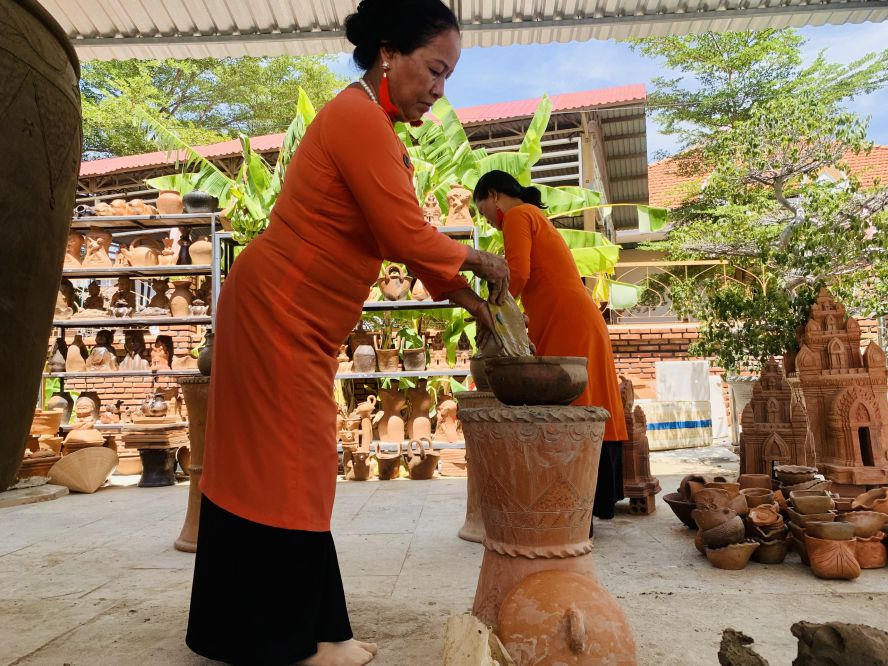
For more than a thousand years, the Cham people here have exploited clay in the fields to pursue the pottery craft taught by their ancestor Po K'long-chank. How many clay bribes have been raised, how many clay trucks have been transported to the village?
If it were in other clay mines, perhaps this place would have been lost in a deep, abyss after more than a millennium of exploitation. However, this place is still flat and packed like since the beginning of the world.
Because when the water level of the Quao River rose, the earth holes were filled, as if there were no losses. The land in the fields has been transformed into salt, copper, statues, and busts... but the Quao River has quickly compensated with new land in each overflow period.
Seen geographically, Hamu Nulank fields are located at the Quao River intersection, and when it rains heavily, the water of the Quao River rises, causing the fields to be completely flooded. During this time, the fields are covered with silt and clay from upstream.
In the Vietnamese fairy tale, we have known about the miraculous rice belly of Thach Sanh, who was very small but could help the army of 18 countries eat to the full because every time he reached the end of his rice belly, he was full of rice. The clay in Hamu Nulank fields is also miraculous thanks to the Quao River.
Up to now, researchers in Cham culture and geologists have not been able to explain the phenomenon of "land taken forever but still intact" in the Quao River bank. What strange area did the Quao River flow through to get alluvium that could turn into clay here?
Why does that alluvium just turn into clay, not any other thing? Even more strange is that in this Hamu Nulank field, in an area of over 190 hectares, but only about 30 - 40 hectares of clay is located at the foot of a high field right next to the water source.
The clay here has very special characteristics when put in water to form, it is very flexible, thick and smooth. When melting the pottery and putting it in the kiln, the pottery did not crack. Therefore, in the area where the rice fields are about to enter this harvest, in just a few weeks, there will be a bustling scene of taking soil and clay to get on the cattle carts to transport to the village.
The process of getting clay here is as simple as getting soil for bricks. People scrap the soil on the surface of the field, ignore it on one side, dig up the mud below, then fill it up as before. Just like that, digging clay for thousands of years, but the place where the soil is taken still shows no signs of destroying the clay layer or building holes or valleys.
Taken away and then filled, that is the endless rotation of the Quao River to help the Cham people in Bau Truc have the traditional pottery craft to make a living and preserve national culture. That rotation has also taken shape, the movement of the potters during the production process.
Bau Truc pottery does not use rotary tables like in other pottery villages in Vietnam and around the world. The pottery table of the Cham people of Bau Truc is stationary, not rotated blindly due to kicking or rotating by hand. The pottery table is stationary but the people are moving.
When shaping, potters use their hands to squat and rotate around the pottery table to adjust the shape of the product. The movement of the legs, buttocks, waists, and back sometimes in the direction of the clock's rotation, sometimes in the direction of the clock's counter is very rhythmic and graceful.
That piece of art by the pottery making artist is in keeping with the rotation of the Quao River in preserving the valuable clay source for the pottery craft. When making pottery, artisans also step into a creative and laboring dance, to blow the Cham soul into each clay grain, each clay tarpaulin.
Bau Truc pottery contains not only stories about the life and culture of the Cham people but also dances. Seeing the fingers of the craftsman using a roll of fabric soaked in water to scrape the sides of the clay body is no different from a curved finger in the dance of the female dancer Ap-sa-ra.
More than 1,000 years have passed, but the Quao River is still tirelessly returning to make the pottery of the Cham people in Bau Truc survive. That rotation will turn to the limit...


